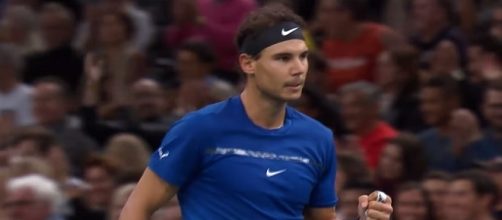Rafael Nadal, 31, can prepare for a little fiesta regardless of the outcome at Paris-Bercy or the Nitto ATP Finals in London. For a fourth time in his career, Nadal will clinch that year-end world No. 1 seat. The numbers are solid, the pile of ATP awards as well, so the future looks bright for him, especially after having some tough seasons back in 2015 and 2016. He is now at the top again, perhaps not playing like he used to while in his prime, but the level of intensity is still above average. The remaining pieces of 2017 are about to be blown away by the wind.
Thus, a short glimpse into how the season of 2018 might look for Nadal cannot be labeled as an overreach.
The first hardcourt swing as a warm-up for the clay court fest
Entering the Masters 1000 at Paris-Bercy, Rafael Nadal was 65-10 in the win/loss department. Considering his tennis output in Paris and the upcoming Nitto ATP Finals he will surpass the 80 matches played limit, which is a huge achievement and a result of him having a full season with constant week-to-week play. What stands out is his decision to go after an extended schedule on hard court, the surface that tends to put his knees under a lot of tension.
The 2018 season will have Nadal trying to consolidate his spot. Roger Federer won't be a threat in the first part of the year as the Swiss will have to defend his own surreal achievements of 2017.
The 2018 Australian Open is the first hotspot on the radar in January. Earlier this year, he chose Acapulco as a warm-up prior to Indian Wells and Miami. For 2018, the ATP 500 event from Mexico might be erased from his schedule.
The clay-court swing is where Rafael Nadal usually shines. The spring of 2018 will put him in a position where he will have to defend a lot of points.
Back in the spring, he won four titles on this surface (Monte Carlo, Barcelona, Madri, and Roland Garros). Overall, that translated into 4,500 ranking points.
Grass season and the second swing on hard
Nadal did great on all surfaces other than grass. Without any warm-up prior to Wimbledon, the transition from clay to grass turned out to be a lengthy process.
Next season, Nadal can aim higher on this surface and maybe booking an event before going to Wimbledon will help.
After Wimbledon, it'll all come down to hard court and its variation of types and locations. The North American summer swing had Nadal performing well when it mattered the most, namely at the 2017 US Open. It'll be interesting to watch if he can go for more as his tennis output on this surface seems to have gained an extra gear. Back-to-back titles at the US Open and then in Beijing, plus a final in Shanghai, serve as proof of the improvement.


